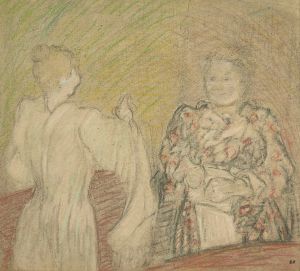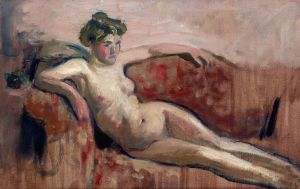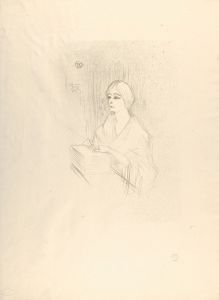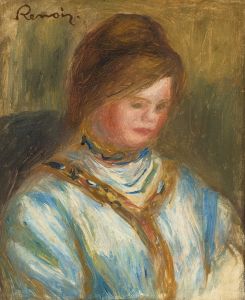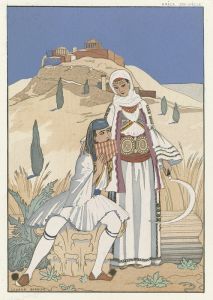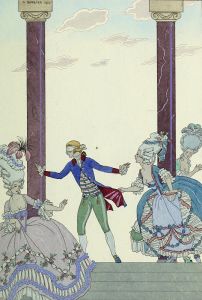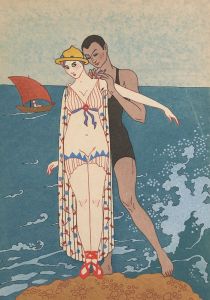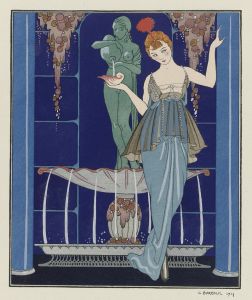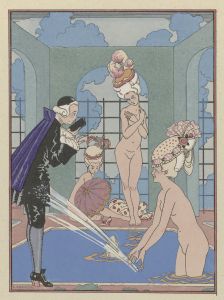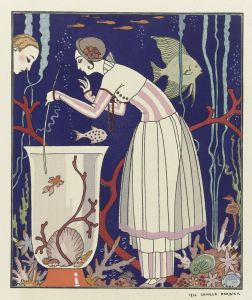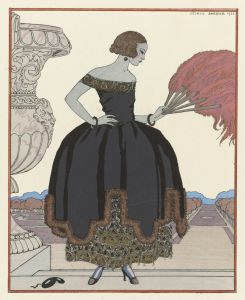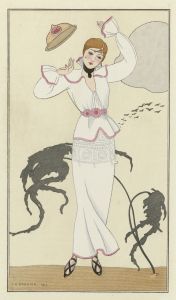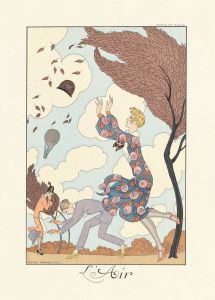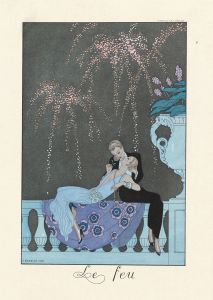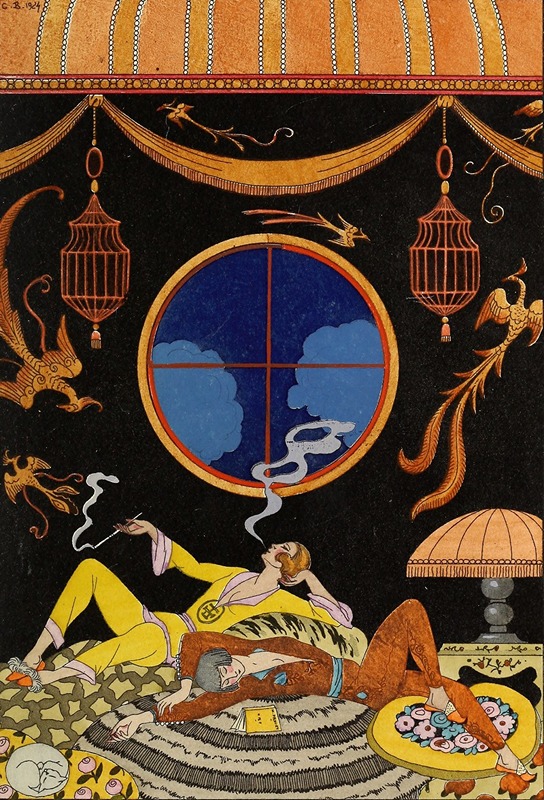
Falbalas et fanfreluches: La paresse
A hand-painted replica of George Barbier’s masterpiece Falbalas et fanfreluches: La paresse, meticulously crafted by professional artists to capture the true essence of the original. Each piece is created with museum-quality canvas and rare mineral pigments, carefully painted by experienced artists with delicate brushstrokes and rich, layered colors to perfectly recreate the texture of the original artwork. Unlike machine-printed reproductions, this hand-painted version brings the painting to life, infused with the artist’s emotions and skill in every stroke. Whether for personal collection or home decoration, it instantly elevates the artistic atmosphere of any space.
"Falbalas et fanfreluches: La paresse" is an illustration by the renowned French artist George Barbier, created as part of his celebrated series "Falbalas et fanfreluches." George Barbier, born in 1882 and active during the early 20th century, was a prominent figure in the Art Deco movement, known for his exquisite fashion illustrations and contributions to the world of decorative arts.
The series "Falbalas et fanfreluches," which translates to "Ruffles and Frills," was an annual publication produced between 1922 and 1926. Each edition featured a collection of pochoir prints, a technique involving the use of stencils to apply color, which was popular in the early 20th century for its ability to produce vibrant and precise images. These prints were highly sought after for their elegance and the meticulous detail that Barbier infused into each piece.
"La paresse," meaning "Laziness" in English, is one of the illustrations from this series. The work exemplifies Barbier's signature style, characterized by its graceful lines, sophisticated color palette, and the depiction of fashionable figures in luxurious settings. The illustration captures the essence of the Art Deco period, reflecting the opulence and modernity that defined the era.
Barbier's work often celebrated the themes of leisure and beauty, and "La paresse" is no exception. The illustration typically portrays a scene of relaxation, with figures elegantly posed in a manner that suggests a carefree and indulgent lifestyle. The attention to detail in the clothing and surroundings highlights Barbier's keen eye for fashion and his ability to convey the textures and patterns of luxurious fabrics.
Throughout his career, George Barbier collaborated with various fashion designers, theaters, and publications, contributing to his reputation as a leading illustrator of his time. His work appeared in prestigious magazines such as "Vogue" and "Harper's Bazaar," and he was instrumental in shaping the visual culture of the 1920s and 1930s.
The "Falbalas et fanfreluches" series, including "La paresse," remains a testament to Barbier's artistic legacy. These illustrations are not only admired for their aesthetic beauty but also for their historical significance, offering insight into the fashion and cultural trends of the early 20th century. Barbier's ability to capture the spirit of his time with elegance and sophistication continues to be celebrated by art enthusiasts and historians alike.
Today, George Barbier's works, including "La paresse," are held in high regard and can be found in various art collections and exhibitions worldwide. They serve as a reminder of the enduring appeal of Art Deco and the timeless allure of fashion illustration.





